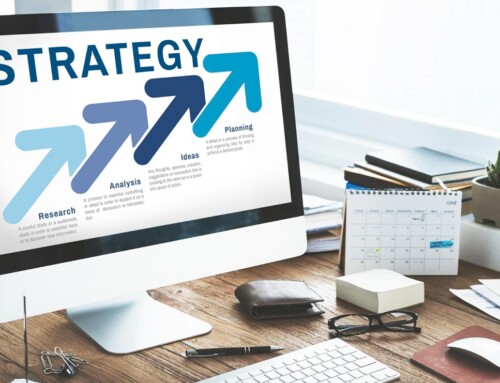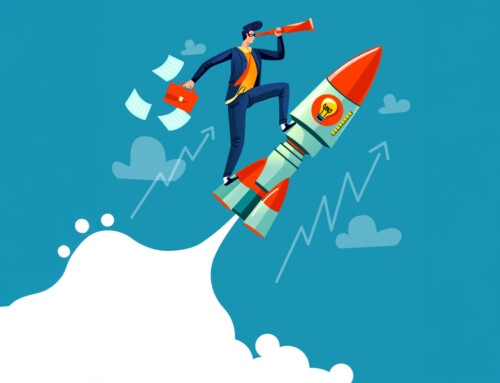Contents
Goodbyes aren’t easy, especially when you shouldn’t say goodbye in the first place! I’m talking about your customers, of course. Too many businesses make the mistake of abandoning their customer the moment they finalize their purchase. Basically, they forget about after-sales service — all the different things you can do to keep your current customers satisfied, engaged, and likely to come back for more. Ignoring that will cost small businesses much more than larger competitors.
For your small business, existing customers are just as vital as new leads, perhaps even more. Data shows that existing customers account for an average of 60% of all sales in small businesses. The first time I read that, I needed to take a minute and let that sink in. This surprising research result shows that, with the correct aftercare, existing customers are a better source of revenue than new leads you need to convert. If this doesn’t prove the importance of after-sales service, I don’t know what could. So, let’s get down to it and see what we mean by after-sales service and how you can use it in your small business.
Defining After Sales Service
9 Smart Aftercare Strategies for Existing Customers
Upsell
Okay, I know that upsell is usually considered a bad business practice, but it doesn’t have to be. When talking about “upsell,” people usually mean a kind of hidden-costs method that some businesses, unfortunately, use to get more money from the customer at the last minute. The most infamous example is probably the hidden “warranty” cost, where they’ll pressure you to buy some type of warranty or insurance for the product you just purchased.
Naturally, I’m not talking about this type of upselling. No, I simply mean you can give your customer the chance to improve their experience with your product or service by providing them relevant services or additional products. For example, you can try offering a support package on top of your primary service or free maintenance services for your product.
New Products
Everybody wants to be a part of the “in” crowd, the people with the backstage pass. Making your existing customers feel that way will go a long way in getting their loyalty and money as they come back for more. One way to do this is by giving them “insider” knowledge of the new products and services you are about to release. Your previous customers should be the first to know about the new stuff you’re about to sell. It’s not like you should inform them weeks or even days before your new product launch . Just a heads up will be enough to show them that you care about and respect them. You could even give them the option to pre-order your new product, which will get you some early cash to boot.
Personalized Experience
Without a CRM, this one may be slightly harder to pull off. You want to make your existing customer feel like you know them — after all, they have done business with you, no matter how typical or short your interactions were. I know I loved it when the guy I ordered some clothes from just once remembered me. That’s what you should definitely consider when designing your after-sales service.
For example, with the right CRM, you can create automatic follow-up emails for customers that refer to their previous purchase. I’m talking about something a bit more creative than: “Because you bought Kitten Hair Brush x 2 we now recommend you buy Adult Cat Hair Brush” (I’ve actually received that once, with that exact wording). You can, for example, tell them something like “it’s been 10 days since you got a ceramic mug from our store; are you happy with it? Would you like a sneak peek at our upcoming new collection?” This kind of aftercare will have an impact, making the recipient feel like they’ve made an impression somehow, standing out from the crowd. That will start a unique, personal bond between your business and the customer. As a small business, that bond can lead to conversions and referrals that make a difference to your bottom line.
Holiday Greetings
This one is a bit of an old hat, but that’s no reason not to use it. Well-designed and tasteful greeting emails for different holidays can be an excellent way to refresh their memory or increase their engagement.
Holiday greeting emails are also the perfect opportunity to announce new offers, discounts, and deals. With some holidays, deals and discounts make more sense than others — Near Thanksgiving, for example, everybody is waiting for Black Friday sales and those heavy discounts. That doesn’t mean other holidays are not good occasions for sales promotions! You should also try to find holidays that have something to do with your business or products. The obvious example is Valentine’s Day for a homemade gourmet chocolate business. You probably won’t find such a perfect match but try looking; you may just find a connection.
Naturally, what type of greetings you should send and what that greeting should say depends mainly on your customer base. In North America, you probably don’t have to send a greeting card or email for Obon or the Golden Week unless your business has something to do with Japan or Japanese culture.
Birthday Surprise
The holidays are not the only festivities in the year — there are also birthdays. That’s the one thing you can be sure everybody on your list of contacts has in common. Your customers will appreciate a simple, authentic, and honest email wishing them a happy birthday. Of course, remembering to add “birthday email” to your tasks for the day, writing the email, and sending it manually are next to impossible. If you have more than a handful of customers, you should let your CRM and marketing tool handle that. The software will use your CRM database to track each customer’s birthday, craft a customized email from a template, and send it at just the right time.
Naturally, you don’t want to send birthday emails to both your leads and your customers. Keeping your leads, contacts, and previous customers separate is another task for your CRM software. RunSensible, for example, uses an intuitive tagging system that sets apart not just leads and customers but groups relevant contacts together.
Discount Vouchers
There is more than one way to reignite a previous customer’s passion (to buy). One of the more successful ones is sending them a coupon or voucher for a discount on their next purchase. This usually works like a charm. The only thing to note is how large a discount you will set aside for them. A small 5% discount may not be enough incentive to draw some customers back. Then again, offer a 50% discount, and you’ll definitely have money troubles pouring in. You know your business and your buyers better than anyone, so you can probably guess how much a good discount should be. When in doubt, remember to use the A/B testing method I revealed in this article on email marketing.
Post-Sales Email Nurture
You probably have a few email nurture programs set up for your leads. Email nurture is a vital marketing strategy for moving your leads down the sales funnel and converting them into paying customers. Businesses usually have different email lists for different lead segments, based on how the lead was generated or their lead score. Most small business owners forget (and what you can use as an edge) that email nurture does not have to end with the purchase.
To retain the customer you have just converted, you need to set up a special email list. You should also create some custom content designed to keep your business fresh in the customer’s mind. Of course, the email frequency will be much lower with previous customers. You don’t want to send them a new email every other day — that may work well in convincing new leads to engage more, but it will just turn new customers away. Read this article to learn more about email frequency and how RunSensible can help you optimize your email nurture.
Your email nurture list will also prove valuable for sending them the vouchers or coupons I discussed above. Throw in some appropriate holiday greetings, and your customers will start to see your emails as a constant but welcome presence in their inboxes.
Surveys
Here’s a way to make your new customers feel valued: ask them how you did. What did they think of your product? Are they satisfied with your services so far? What do they want you to do differently? Not only do these questions show them you care about their input, but they’re also invaluable sources of information that can improve your marketing. Collect the answers to your questionnaires with your CRM and integrate them into your buyer personas.
You should consider, however, that asking people to fill out a boring survey is probably not going to work. That’s why you should try to cut the questions to a minimum and make sure they’re fresh and well-written. A great idea would be to bring the survey together with discount vouchers and ask your existing customers to answer your questions and win a discount on their next purchase.
Tutorials and Intros
Okay, so you’ve managed to sell somebody your nifty new product. Now what? I mean, think back to when you were pitching the product — it always came with an explanation on how to use it and what you could do with it, right? There is no reason your customer shouldn’t benefit from that. You’ve created the product or service, and you know how to use it and all its little-used features. Create a series of short, intelligent how-tos, intros, and “pro tips” that show your customer how to get the most out of what they bought.
The best way to do this is via videos. Okay, creating a great video seems like a hassle, especially if your business is product-based, but it doesn’t have to be. Authentic, to-the-point videos beat expensive, fancy ones every time. And if your business is about selling an application, this will be as easy as screen recording.
Remember, you can either make all the videos at once and dump them on the customer in one email, or you can parcel them out over a few well-timed ones. I prefer the latter option since it actually makes the customer look forward to the next insider tip that can enhance their experience.
After-Sales Service and Customer Support
There is some confusion between marketing and sales experts about the meaning of after-sales service and how it’s different from customer support. Naturally, customer support is a major part of any aftercare, but usually, it’s also the only part. That means for a lot of small businesses, the only contact they will have with their customers is when they complain about a problem they’re facing. That’s not going to leave a positive image of your business.
After-sales service is about expanding and optimizing your relationship to your existing customers. Done right, it can help you boost your revenue and customer retention rates considerably. And, unlike customer support, after-sales service is not passive, waiting for the customer to come to you — you take charge of your relationship with your buyers and make sure they have an excellent experience as your customer.
How to Simplify and Optimize After Sales Service
Of all the after-sales service hacks and strategies that I showed you in this article, you only do a couple without using a CRM system. That’s not intentional — it’s just how powerful a tool the right CRM can be. It gives your business a whole range of new methods to grow and make more profits.
Of course, not every CRM is up to the challenge. Some CRM systems come with all types of bells and whistles but they’re too expensive for a small business to afford. Other CRMs may be affordable but lack the necessary features. RunSensible is a CRM and marketing tool specifically designed for small businesses. It comes with a host of features that make sales and marketing simple and intuitive; plus it’s packed with features that empower you to set up all the strategies I’ve mentioned here and much, much more. Give it a try for free.
Disclaimer: The content provided on this blog is for informational purposes only and does not constitute legal, financial, or professional advice.






